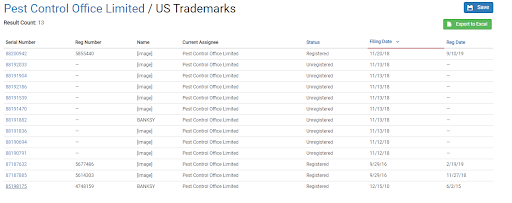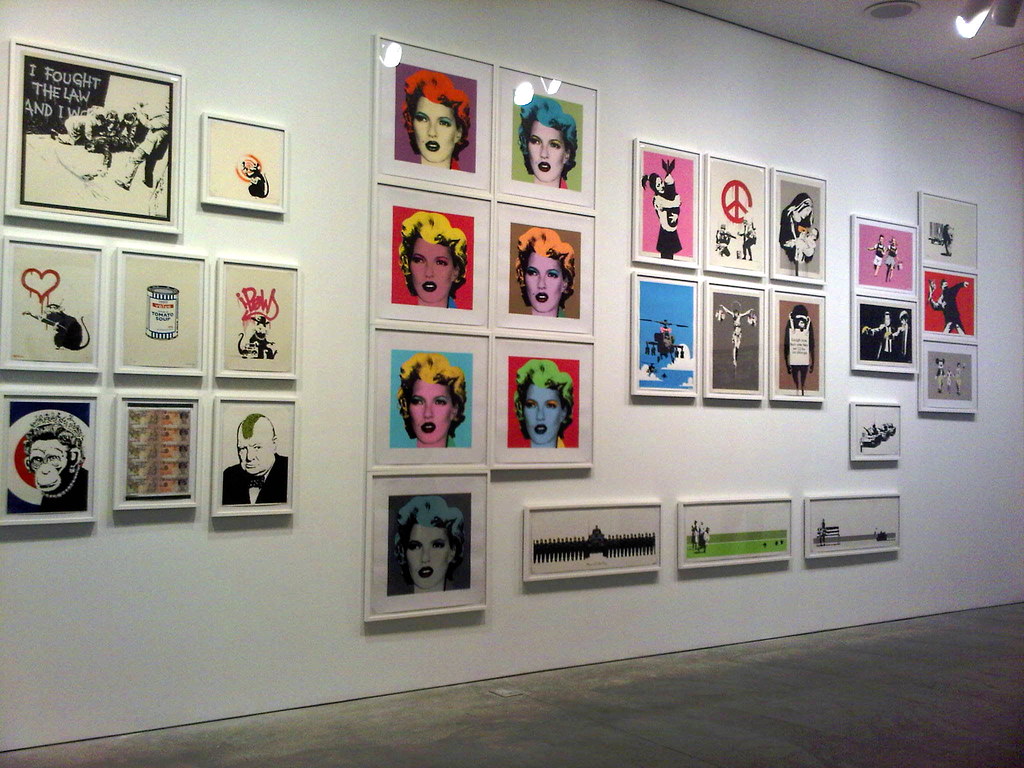Banksy, the world-famous and still unidentified street artist who has made a habit of shattering expectations and questioning assumptions in the art world, has once again found himself in a trademark dispute. This most recent dispute against Full Colour Black, a contemporary art licensing company that specializes in the commercialization of street art, is characterized by bold claims on both sides. According to Bansky, “A greetings card company is contesting the trademark I hold to my art and attempting to take custody of my name so they can sell their fake Banksy merchandise legally.” While Full Colour Black has painted itself as the underdog. “We are not corporate… we sell greetings cards from our home. It is ENTIRELY untrue that we are attempting to ‘take custody’ of his name.”
A trademark does not equate to the custody of a name; trademarks are signs used in trade to identify products. In fact, the disputed trademark is actually an image of his famous work Rage, the Flower Thrower which is owned through Pest Control Office Limited, a handling service acting on behalf of Banksy. According to the European Union Intellectual Property Office (EUIPO), the essential function of a trademark “is to guarantee the identity of the origin of goods or services to the consumer or end-user by enabling the latter, without any possibility of confusion, to distinguish the product or service from others that have another origin.”
Trademark Owned by Pest Control Office Limited

Source: EUIPO trademark search
Full Colour Black is challenging the validity of Banksy’s trademark on the basis that, “he has freely permitted it to be reproduced such that it no longer functions as a trademark (if it ever did),” as stated by Full Colour Black’s attorney, Aaron Wood, in a WTR article.
Whether this criticism will hold up remains to be seen. Banksy’s strategy to counteract the invalidity action has been to open up Gross Domestic Product, a shop selling his art/homewares. While Banksy seems to be acting under the impression that this will demonstrate genuine use, it might be considered merely token and thus backfire. It is also unclear whether the European Union Trade Mark (EUTM) Cancellation Division will agree that demonstrating use actually addresses the primary criticism put forth by Full Colour Black, which is that the artwork doesn’t function as a trademark.
Beyond the EU
WTR’s quote of Aaron Wood goes on to say, “that he is trying to register for collateral purposes (ie, to avoid evidential issues with copyright and to avoid having to file a ‘statement of use’ in the US).” Pest Control also owns several US trademarks.

Source: ktMINE Profiles Application
It will be interesting to see how the outcome of this dispute affects Pest Control’s pattern of trademark filings in the future or whether further attempts to invalidate Banksy trademarks will ripple beyond the EU. Some have even suggested that there is a remote possibility that further trademark disputes could result in Banksy being forced to reveal his identity in order to protect his work the old-fashioned way, through copyright. Others insist that Banksy’s preference for trademarks is purely philosophical because anonymous works can be protected in both the US and Great Britain. At the end of the day, perhaps Banksy is simply making us reevaluate our assumptions about how the world works once again.




